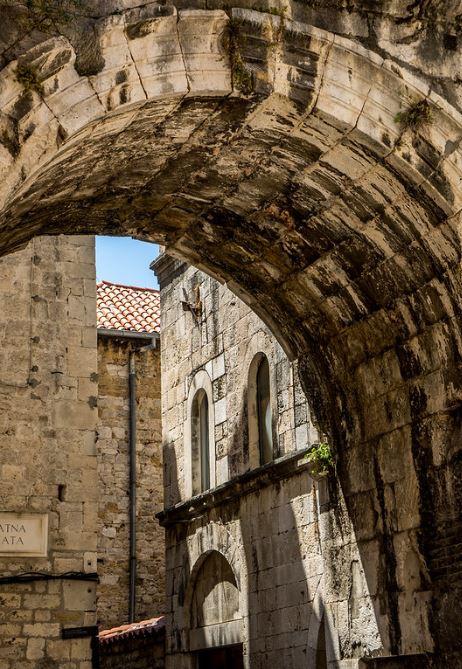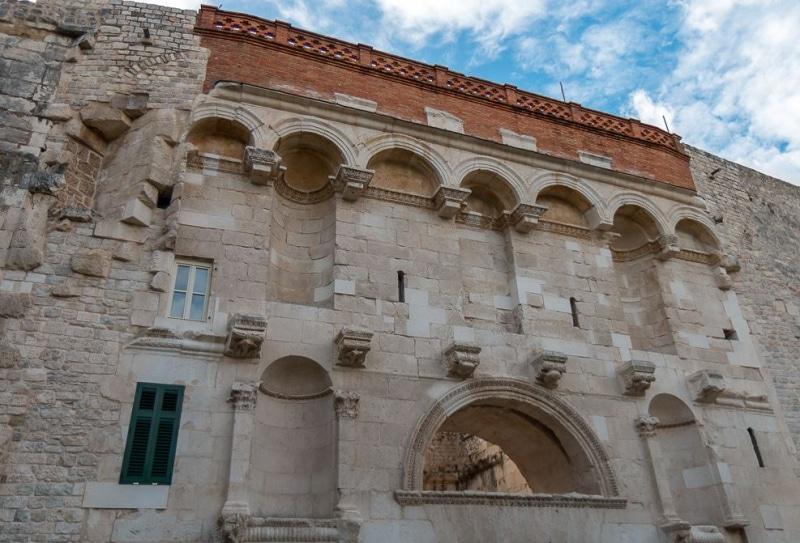Golden Gate Split
Removed from Unnamed collection





Source: Priscilla Bates Images may be subject to copyright. Learn More
The ancient Romans knew them as Porta septemtrionalis. Imagine Emperor Diocletian strolling through these majestic gates on June 1, 305, as he entered his opulent palace. Crafted in a rectangular shape with sturdy double doors, these gates were designed as part of the Roman military's strategic defenses, known as a propugnaculum. The facade was adorned with niches that housed statues of the four tetrarchs: Diocletian, Maximian, Galerius, and Constantius Chlorus. These gates formed a direct route from the Peristyle, through Cardo street, leading straight to Salona, the capital of the Roman Province of Dalmatia. Back then, only the emperor and his family had the privilege to pass through them.
Today, these historic gates, alongside the nearby monument to Bishop Gregorius of Nin (Grgur Ninski) created by the renowned Croatian sculptor Ivan Meštrović, are among the most beloved tourist attractions in Split. The statue of Grgur Ninski is said to bring good luck if you rub its big toe, a tradition many visitors enjoy participating in.
Under Venetian influence in the 16th century, the gates were renamed Porta Aurea, or the Golden Gates, a name that has persisted to this day. It's fascinating how history and culture intertwine here, making these gates a must-see for anyone visiting Split. Whether you're a history buff or just love a good story, the Golden Gates offer a peek into the grandeur of ancient Rome right in the heart of Croatia.
 Priscilla Bates
Priscilla Bates  Croatia
Croatia